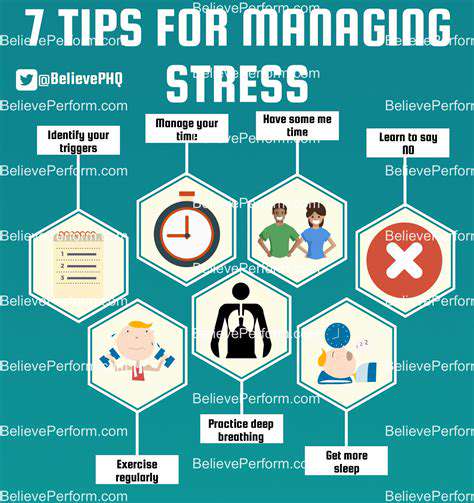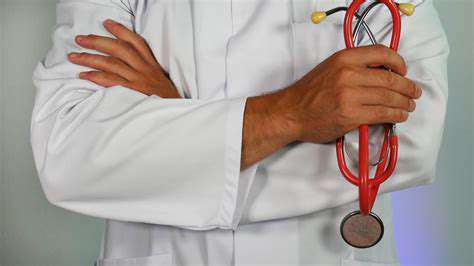How Stress Triggers Head Pain: Exploring the Connection
The Science Behind Stress-Induced Head Pain
The Mechanism of Stress and Its Effects on the Brain
Stress triggers a complex response in the brain that can lead to physical symptoms, one of which is head pain. When faced with stress, the body releases a series of hormones, including adrenaline and cortisol. These hormones prepare the body for a 'fight or flight' response, which can lead to increased heart rate and heightened sensitivity to pain.
During periods of chronic stress, the brain's neurotransmitters and chemical balance can be disrupted, contributing to the experience of headaches. This imbalance can cause blood vessels to constrict or dilate improperly, further leading to migraine or tension-type headaches.
Additionally, stress can activate the hypothalamus-pituitary-adrenal (HPA) axis, which plays a pivotal role in the stress response. This activation can result in the overstimulation of certain areas in the brain, increasing sensitivity to pain and discomfort.
Understanding these mechanisms can give insight into how effectively managing stress might reduce the frequency and severity of head pain in individuals prone to stress-induced headaches.
Management Strategies to Alleviate Stress-Related Head Pain
Finding effective ways to manage stress is crucial for those who frequently suffer from head pain. Techniques such as mindfulness meditation, yoga, and deep-breathing exercises can significantly reduce stress levels and improve overall mental wellbeing.
Physical activity is another powerful tool. Regular exercise can help lower cortisol levels and trigger the release of endorphins, which are natural painkillers. Even a simple daily walk can provide relief and help alleviate feelings of stress that may lead to headaches.
In addition to physical techniques, maintaining a balanced diet and ensuring proper hydration can play key roles in headache prevention. Dehydration and nutrient deficiencies can exacerbate the effects of stress, so it's essential to nourish the body adequately.
Finally, seeking support from mental health professionals, such as therapists or counselors, can provide valuable coping strategies for managing stress. Engaging in conversations about stressors can lighten the emotional load and decrease the likelihood of stress-induced head pain.
Identifying Symptoms and Types of Head Pain Linked to Stress
Understanding the Different Types of Head Pain
Head pain can manifest in various forms, each with its unique characteristics and triggers. The most common types include tension headaches, migraines, and cluster headaches. Tension headaches are often described as a tight band around the head, while migraines can be accompanied by sensitivity to light and sound.
Cluster headaches, on the other hand, occur in cyclical patterns and are typically one-sided, causing severe pain. Understanding these types helps in identifying the symptoms associated with stress-related head pain.
Stress can exacerbate existing head pain conditions. For instance, individuals who already suffer from migraines may notice an increase in the frequency and intensity of their episodes during particularly stressful periods.
Additionally, chronic stress can lead to new occurrences of tension headaches, even in those who have never experienced them before. Identifying the type of head pain is crucial for effective treatment and management.
Recognizing symptoms associated with each type of headache can guide individuals in seeking appropriate help and implementing stress management techniques to reduce occurrences.
Physical Symptoms to Watch For
Physical symptoms often accompany stress-induced head pain. Common indicators include a tightness or pressure in the forehead, temples, or back of the neck. This tension often results from muscle contractions caused by stress.
Other symptoms may include fatigue, changes in sleep patterns, and difficulty concentrating. Additionally, stress can lead to a heightened sensitivity to pain, making the individual more susceptible to head pain.
Some may also experience dizziness or visual disturbances, especially if the head pain is migraine-related. These physical symptoms can significantly affect daily life, prompting individuals to seek immediate relief.
It is essential to recognize these physical manifestations as signals that one needs to address underlying stressors and find healthy coping mechanisms.
Documentation of these symptoms can also be useful for healthcare professionals during evaluations and treatment discussions, aiding in the development of a tailored management plan.
Emotional and Psychological Symptoms
Stress doesn't just affect the body; it can also lead to emotional and psychological symptoms that may correlate with head pain. Anxiety, depression, and irritability are common mental health issues exacerbated by chronic stress.
The relationship between stress and head pain can create a cycle where pain exacerbates emotional distress, leading to further increases in stress levels. This cycle can be challenging to break without intervention.
People experiencing head pain linked to stress may also exhibit decreased motivation and social withdrawal. Caregivers and friends should be mindful of these changes, as they may signal underlying stress issues.
Utilizing relaxation techniques, mindfulness practices, and cognitive behavioral strategies can help mitigate these emotional symptoms, promoting both mental wellness and pain relief.
Addressing emotional symptoms alongside head pain is essential for a holistic approach to treatment, ensuring all aspects of an individual's health are taken into account.
Linking Stress Management Techniques to Pain Relief
Implementing effective stress management techniques can significantly reduce the frequency and severity of stress-induced head pain. Techniques such as deep breathing exercises, meditation, and yoga encourage relaxation and tension relief.
Regular physical activity also plays a crucial role in stress reduction. Endorphins released during exercise can help alleviate pain and improve overall mood. Finding an exercise routine that fits one’s lifestyle is vital.
Maintaining a balanced diet with proper hydration is another often-overlooked aspect of stress management. Certain foods can trigger inflammation and headaches, while a well-nourished body may better handle stress.
Limiting caffeine and alcohol intake can also contribute positively to stress management. These substances can lead to increased anxiety and disrupted sleep, both of which can worsen head pain.
A consistent sleep schedule, combined with taking time for hobbies and relaxation, can further enhance stress relief efforts. Individuals should prioritize self-care to maintain both physical and mental health.
Seeking Professional Help and Treatment Options
For chronic or severe head pain linked to stress, seeking professional help is crucial. Healthcare practitioners can provide diagnostic evaluations, helping differentiate between various headache types and determining effective treatments.
Medications may be prescribed to alleviate head pain, including over-the-counter options or prescription drugs for migraines. However, it's equally important to combine these treatments with lifestyle changes for long-term relief.
Therapies such as cognitive-behavioral therapy (CBT) can help individuals manage stressors and train them to cope with pain more effectively. CBT focuses on changing negative thought patterns that may contribute to stress and head pain.
Physical therapy or massage may also be beneficial, especially for those experiencing tension headaches stemming from muscle tightness. Regular sessions can help maintain body tension and promote relaxation.
Support groups can further provide encouragement and coping strategies from those experiencing similar challenges. Building a support network is an essential part of managing chronic head pain associated with stress.
Effective Strategies for Stress Management

Understanding the Stress-Pain Relationship
Stress can manifest in various ways, influencing both mental and physical health. One of the most common physical responses to stress is head pain, which often presents as tension headaches or migraines. This connection is rooted in the body's fight-or-flight response, which can lead to muscle tension in the head, neck, and shoulders.
When stress levels rise, the body releases hormones like cortisol, which can affect pain perception. For many individuals, the reaction to stress can cause changes in their physical state, exacerbating pre-existing conditions or triggering new pain episodes. Therefore, understanding how stress influences head pain is crucial for effective treatment.
Moreover, emotional stress can lead to poor posture or bracing of the muscles, further contributing to physical discomfort. Those who experience chronic head pain often report that stress is a significant factor in their pain episodes, highlighting the importance of managing stress for pain relief.
Lastly, it is essential to consider the role of lifestyle choices, as they can either alleviate or worsen stress levels. Regular exercise, a balanced diet, and adequate sleep are all integral components that can help mitigate the harmful effects of stress on the body, including head pain.
Effective Strategies for Stress Management
Managing stress requires a multifaceted approach that incorporates both mental and physical well-being practices. Techniques such as mindfulness and meditation can help individuals stay grounded and reduce anxiety levels. Implementing these techniques regularly can lead to significant improvements in one's overall stress management.
Physical activities, such as yoga or tai chi, can also be beneficial. These exercises promote relaxation and help relieve tension in the muscles, which can prevent tension headaches from occurring. Enjoying nature and participating in hobbies also serve to distract and uplift mood, thus reducing stress.
Furthermore, developing a support network of friends and family can provide emotional stability during stressful times. This social support can act as a buffer against stress, reducing its impact on health. Engaging in open conversations about stressors helps individuals feel less alone in their struggles.
Finally, considering professional help through therapy or counseling can offer additional tools and strategies for managing stress. A mental health professional can provide personalized coping mechanisms tailored to individual needs. Addressing stress as a primary factor in head pain is essential for achieving lasting relief.

